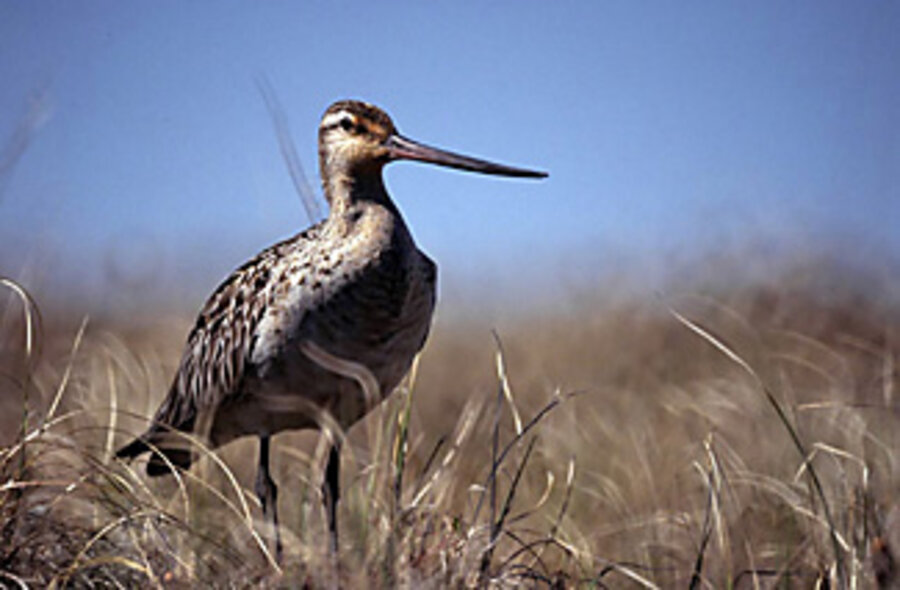Essay: Fly away home
Loading...
In my home state of Washington, the mud is brown, squelchy, and deep. It's likewise in New Zealand, at the Firth of Thames, where I was trying to excavate my shoes after a series of badly chosen steps. At first glance, all mud seems about the same.
But a closer look at the stuff showed its local qualities. During the ebb tide, the acres of mud flat were stippled with the shells of small mollusks. I wasn't the first to have noticed this, of course. Thousands of water birds had gathered at the estuary to feed – ducks, herons, terns and gulls, knots, wrybills, and godwits.
We were there to see the bar-tailed godwits. (Or, to be fair, I was there to see them, and my wife, since she's a good sport and also because my bird-watching amuses her, had come along, too.)
I'd run into them before back in Washington – they show up every so often when they get lost on migration – and it was a treat to see them again, a reminder of home when we were so far from it.
The sun and sky were cold, the wind whipped sharply across the grasses. It was winter in June, which took some getting used to. The birds had segregated themselves in varying degrees of climatic fortification. Most puffed out their feathers and huddled against the wind, but a few more hardy ones were out and about in the water.
The godwits were among those. They were easy to identify: a loose flock of large, slender birds with long upswept bills. Their plumage is gray, mottled with brown and black. They stepped with graceful, deliberate precision, and then would thrust their heads into the mud up to the bill base in pursuit of some worm or clam.
The first people to discover New Zealand owed much to godwits. One legend has it that the ancestors of the Maori, who were living on a nearby barrier island at the time, observed the annual southward passage of what they called the kuaka. They thought, Surely all those birds aren't just circling the earth, so they hopped into their big outriggers, set sail, and found New Zealand.
It was reasonable of people then to assume that no bird could fly forever, but if one comes close, it is the godwit. The feat of its migration is just beginning to be fully understood, but this much is known: After they breed in the far north of Alaska and Siberia, godwits – the ones that were standing right in front of me – fly all the way to New Zealand across the Pacific – nonstop. The birds weigh a little more than a pound. They are in the air for more than six days straight.
(Not surprisingly, the first thing they do when they land is take a good long drink, and then a nap.)
My wife and I had faced a similar relocation. We were married the (boreal) fall before, and just a week later moved to Auckland for the year. It was a quick change, our migration mirroring the godwits' in a way. Had we flown a lot lower and slower, instead of in a jumbo jet, we might have seen their echelons in silhouette, or heard their soft calls. But we were too high and too fast.
Now, we watched the godwits probe the mud and studied their delicate and intense vitality. But when a harrier hawk flew overhead, anything that had wings lifted off in a fluttering wind of alarm calls.
The flock wheeled and condensed into a thick, black mass of birds and then rose and attenuated until it was two, then three flocks, scattering in all directions. The godwits with their swift flight were soon out of sight, and as it had also started to rain in earnest, my wife and I dashed back to the car.
Our time in Auckland was almost over. Later, we would return to Seattle. And as we did, the first flights of godwits would start to return from the north. And perhaps, again, our plane would pass above some of them as they made their way down to New Zealand – two groups navigating over the featureless space of ocean, flying toward different homes.





